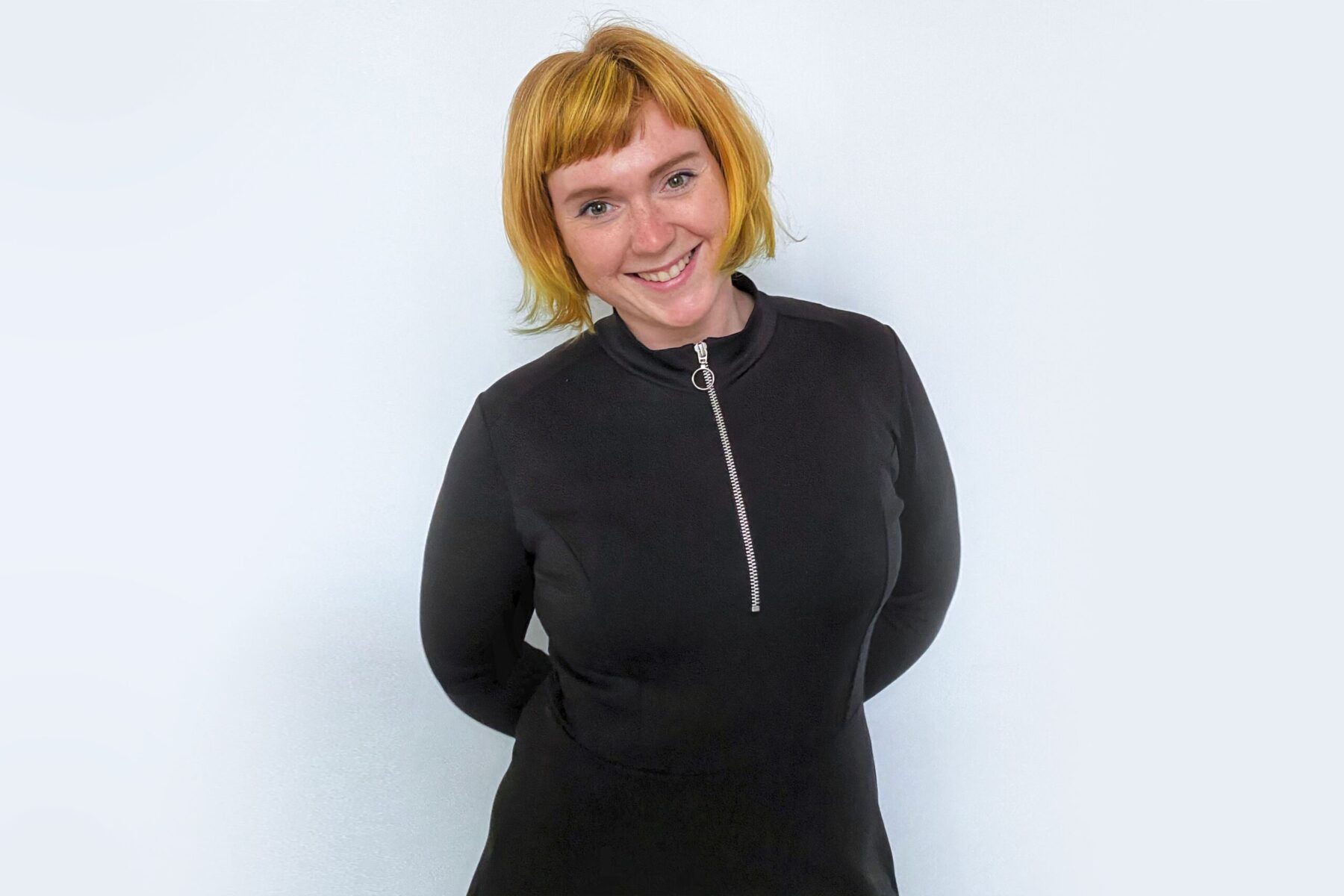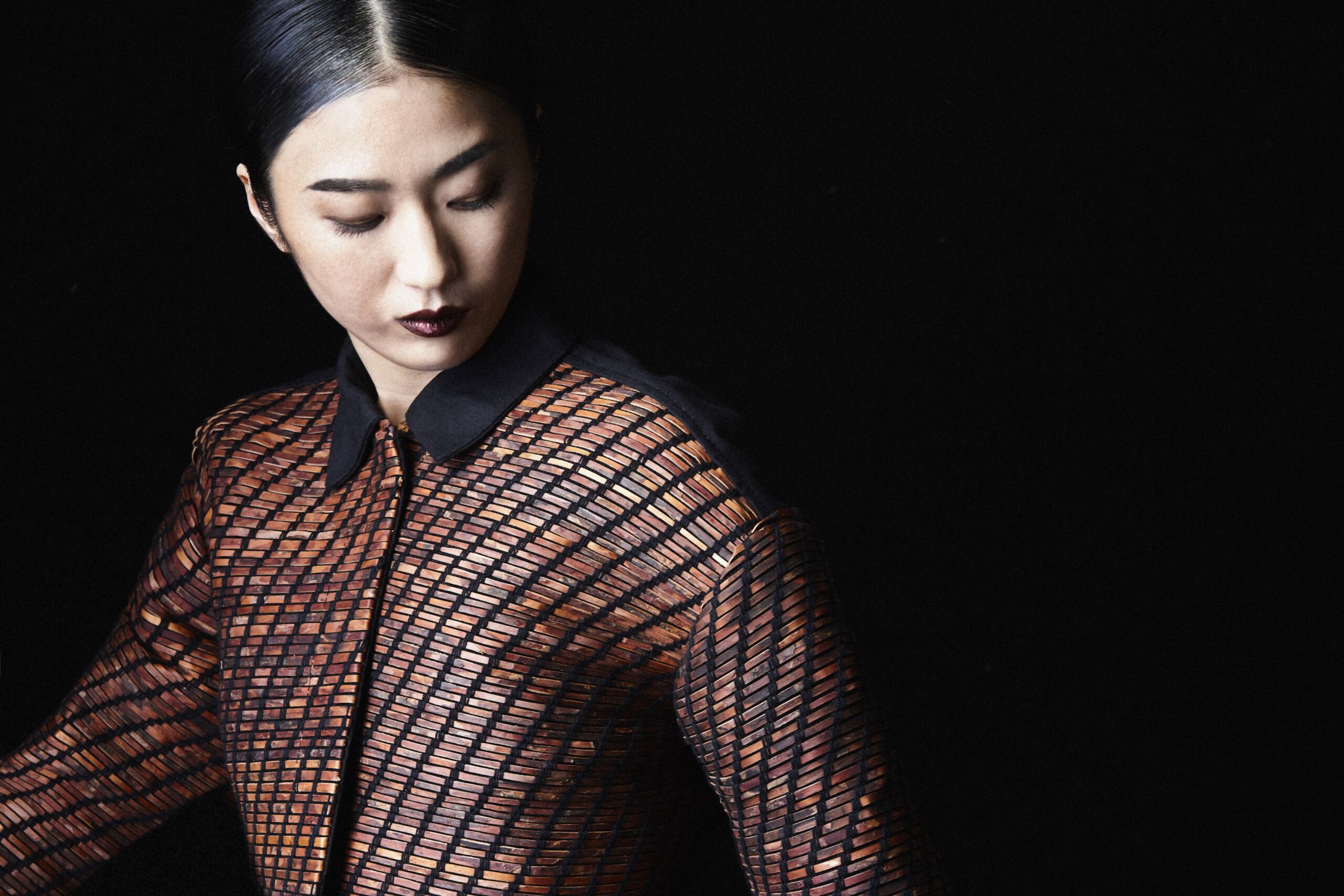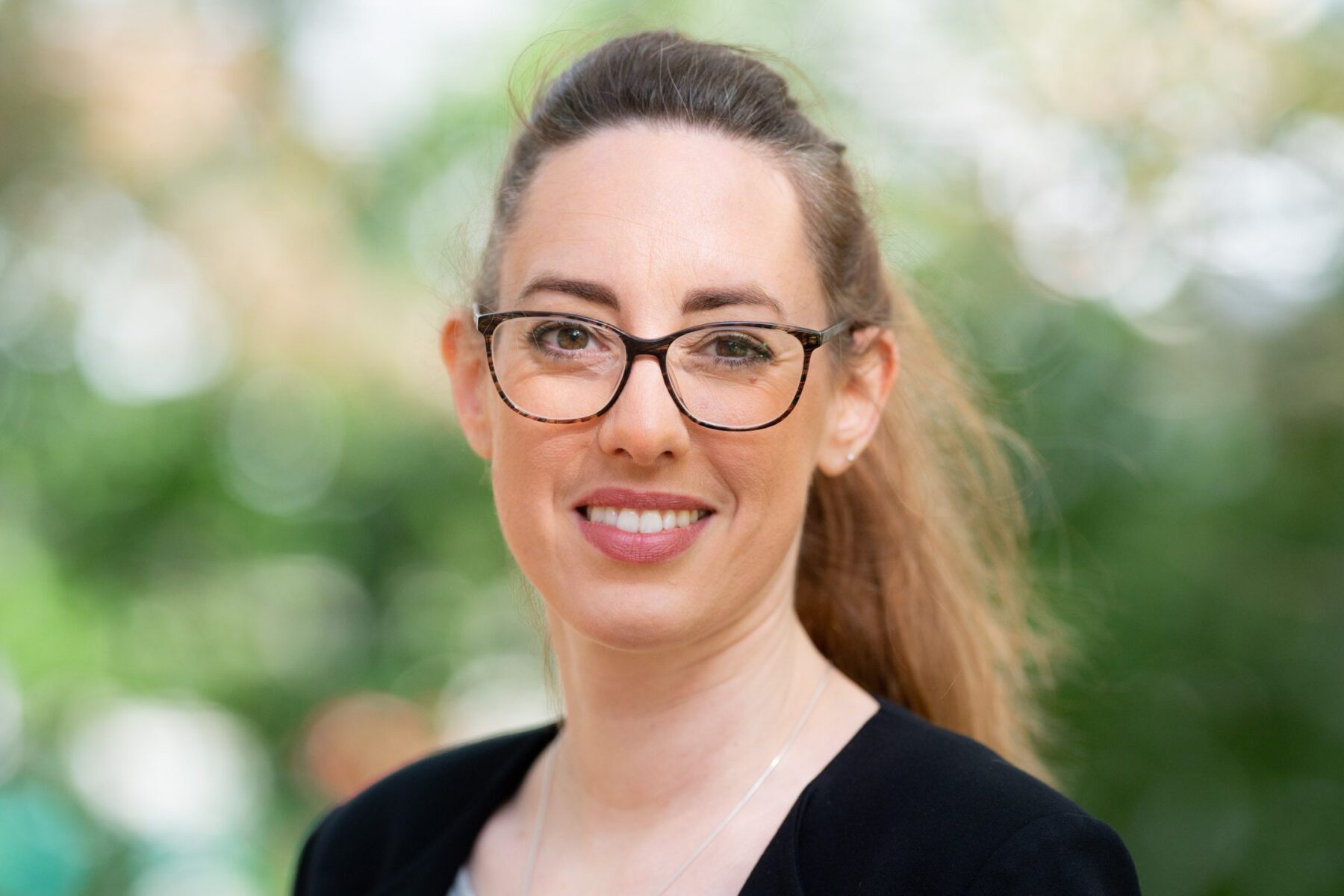
The designer who wants to make jackets and house facades from tree bark – Charlett Wenig
The Max Planck Institute of Colloids and Interfaces (MPI-KG) is known for its outstanding interdisciplinary work. At the location in the Potsdam Science Park, some of the institute’s staff have succeeded in pursuing special careers, such as that of Charlett Wenig. We present the story of a designer who set out to become a materials researcher.
Perhaps it is a little unusual to introduce yourself at the Max Planck Institute of Colloids and Interfaces in Potsdam-Golm with a shoe box – especially if the shoe box contains a pile of animal bones and a book on the subject. Even more unusual, however, was the fact that this shoebox belonged to a designer who had set out to explore materials. Her name: Charlett Wenig. Her aim: to convince Prof. Peter Fratzl, one of Germany’s most renowned materials researchers, to take part in this project. Her plan worked: The first personal meeting was positive, Prof. Fratzl was enthusiastic. And so began her career as a doctoral student in the field of materials research.
The development of the basic idea of turning waste into valuable materials
The idea of doing something different from many other designers came to her during her master’s degree in Bremen. Charlett Wenig had visited craftsmen in workshops and worked in an interdisciplinary way with researchers from the fields of art and opera. “That’s when I thought: we have to work much more with materials, even with those that are left over,” she remembers. That’s why she had initially worked with animal bones – a very unusual choice for a designer. But Charlett Wenig didn’t just want to understand materials, she wanted to enhance the value of scrap materials and work sustainably.

Through the University of Bremen, she had made contact with Dr. Filipe Natalio, a chemist who conducted research in Halle an der Saale. “This is how I ended up in the laboratory for the first time,” explains Charlett Wenig. Because she was very curious and hard-working, she had been recommended by Dr. Filipe Natalio to contact Prof. Peter Fratzl, Director of the Department of Biomaterials at the Max Planck Institute of Colloids and Interfaces in Potsdam-Golm. She did, and that is how the meeting with the shoe box and the animal bones came about.
Interdisciplinary work at the Max Planck Institute of Colloids and Interfaces: the Matters of Activity Cluster
Taking this step was exactly the right decision for the Magdeburg-born artist. Prof. Peter Fratzl is one of four directors of the interdisciplinary cluster “Matters of Activity. Image Space Material.” This cluster brings together 40 scientific disciplines from materials science to design and the humanities. Prof. Peter Fratzl describes the cluster as follows: “The overarching goal is to try to understand interfaces between information and material.” It is about pushing the boundaries of analogue and digital, transferring information and analysing it. For Prof. Peter Fratzl, Charlett Wenig was therefore a good candidate for the cluster: “She has an enormous interest in understanding the things she uses in design. We absolutely wanted to have her with us,” says Fratzl about the young researcher.
How Charlett Wenig discovered tree bark as a material
After initial talks at the Max Planck Institute of Colloids and Interfaces, it soon became clear that animal bones were no longer sufficient for their projects. “I absolutely wanted to work with a large material. Animal bones are small. Trees are large. So I asked myself: What is actually made from tree bark? After all, bark makes up ten to twenty percent of a tree,” Charlett Wenig remembers. She had then discussed her ideas with Dr. Michaela Eder, group leader for biomaterials at the Max Planck Institute of Colloids and Interfaces. The mood was extremely positive. “That’s when I noticed that they really wanted to do the project. I can do research here and there are a lot of cool people involved in the cluster,” says Charlett Wenig.
Research on tree bark, the creation of the first clothes and the Young Academy’s 2020 ideas competition
And so she began her scientific work on tree bark as a doctoral student at the Max Planck Institute of Colloids and Interfaces and the Technical University of Berlin. She researched, read specialist literature and communicated with foresters in the Potsdam area. A mammoth task, as she later admitted herself: “There were dozens of questions to which I initially had no answers: Where do I get tree bark? Who can peel tree bark? Does it work equally well with all bark? How do you dry bark? How does tree bark swell? Can tree bark be dyed? Is there a way to make tree bark flexible as a material?”. She was always supported by the supervisor of her doctoral studies, Dr. Michaela Eders from the MPI-KG.
After spending time on research, she spoke with her friend Johanna Hehemeyer-Cürten about her scientific work. Johanna Hehemeyer-Cürten is a Master student in the Fashion Department at the Berlin-Weissensee School of Art and had some ideas straight away, for example, weaving the bark of a tree. “Jeans are made of a fabric that is not flexible in itself. Only the weave makes the fabric flexible. That’s exactly what we did with the tree bark and made the first jacket, which could then attract different people,” Charlett Wenig said about the collaboration. After many hours of work, they even created their own small collection of fabrics from tree bark. The highlight was then second prize in the Young Academy’s Ideas Competition 2020 in the “Visions” category. “We were extremely pleased that the mixture of design and science was well received,” says Charlett Wenig.

The Potsdam Science Park – a research location that pulses with life
In the eyes of Prof. Peter Fratzl, the Potsdam Science Park is an excellent location for what Charlett Wenig researches: “Science today benefits from the concentration of highly specialised people in one place. That’s what we have here at the Potsdam Science Park, because it is very international due to its direct proximity to Berlin and Brandenburg, and we can work very well here on an interdisciplinary basis,” says the Director of the Department of Biomaterials at the Max Planck Institute of Colloids and Interfaces. “A research location must pulsate: It needs basic research, applied research, company start-ups – and all at one location. Potsdam-Golm has that, and that’s really great,” continues Prof. Peter Fratzl.
Charlett Wenig has also benefited from this atmosphere. In 2021, after about four years of research, she wants to complete her doctoral thesis on tree bark. She already has some plans for her future: “I would like to go into teaching and combine the research areas of materials research and design. I still see potential here, because designers should understand what the material they are shaping is made of. And I would like to use tree bark as a material for architecture, for example on house facades.” Whatever the future of her career, nobody can take away her past successes and the courage to explore new paths.
This blog is funded by the European Regional Development Fund (ERDF) and the State of Brandenburg.
Photo 1: Charlett Wenig © Charlett Wenig
Photo 2: Prof. Fratzl © Max Planck Institute of Colloids and Interfaces / Martin Jehnichen
Photo 3: Tree bark Jacket © Max Planck Institute of Colloids and Interfaces / Patrick Walter
Contact

Karen Esser
PR & Communications
karen.esser@potsdam-sciencepark.de + 49 331 237 351 103